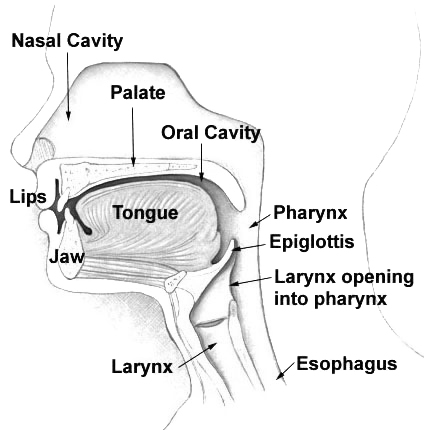Key Difference – Fricative vs Affricate
Fricatives and affricates are two types of consonants that differ from other consonants due to their manner of articulation. A fricative consonant is made by forcing air through a narrow channel made by placing two articulators close together, while an affricate is a complex consonant that begins as a plosive and ends as a fricative. This is the main difference between fricative and affricative.
What is a Fricative?
Fricative consonants are produced by air flowing through a narrow channel made by placing two articulators close together. The air that escapes through this narrow channel often makes a hissing sound. Fricatives are continuant consonants, meaning they can be made without interruption as long as you have air in your lungs. Fricatives can be categorized into five groups based on their place of articulation:
– Labiodental fricatives: Produced when the lower lip comes into contact with the upper lip. /f/ and /v/ are the labiodentals fricative in the English language.
– Dental fricatives: These fricatives are produced when the tongue is placed between the teeth; the air escapes through the gaps between the teeth. /θ/and /ð/are examples of dental fricatives.
– Alveolar fricatives: Alveolar fricatives are produced when the air escapes through the narrow passage along the center of the tongue. /s/ and /z/ are examples of alveolar fricatives.
– Palato-alveolar fricatives: These fricatives are produced when the air escapes through a passage along the center of the tongue; the tongue is in contact with an area slightly further back than the alveolar fricatives. Examples include /ʒ/ and /∫/.
– Glottal fricatives: Glottal fricatives are produced by the frication between the vocal cords. /h/ (as in hello and happy) is the only glottal fricative in English.
What is an Affricate?
An affricate is a complex consonant that begins as a plosive and ends as a fricative. An affricative is usually homorganic, meaning both the plosive and fricative are made with the same articulator. They are made by stopping the flow of air somewhere in the vocal tract, and then releasing the air comparatively slowly so that the friction sound is produced.
There are only two affricative sounds in present-day English. They are /ʧ/ (ch sound) and /ʤ/ (j sound). /ʧ/ is a voiceless alveopalatal affricate and /ʤ/ is a voiced alveopalatal affricate.
What is the difference between Fricative and Affricate?
– Definition:
– Fricative: A fricative is a consonant produced by forcing air through a narrow channel made by placing two articulators close together.
– Affricate: An affricative is a complex consonant that begins as a plosive and ends as a fricative.
– Articulation:
– Fricative: A fricative is made by forcing the airflow through a narrow channel made by placing two articulators close together.
– Affricate: An affricative is made by stopping the flow of air somewhere in the vocal tract and then releasing the air comparatively slowly.
– Examples:
– Fricative: /f/,/v/, /s/,/z/,/θ/,/ð/, /ʒ/ and /∫/ are examples of fricatives.
– Affricate: /ʧ/ and /ʤ/ are the only affricate consonants in the English language.
